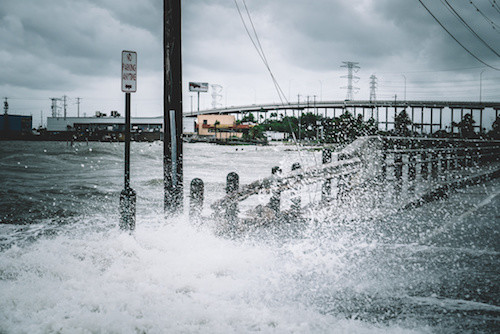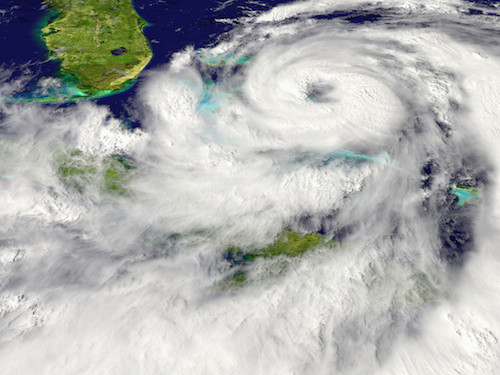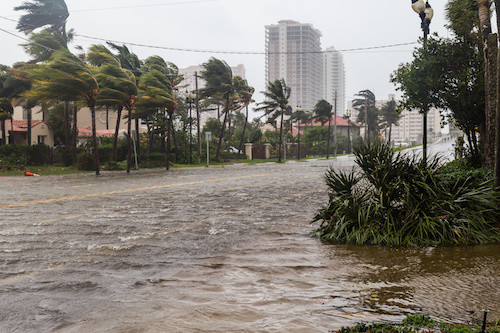How Do Hospitals Prepare for a Hurricane?
Staying Open or Closing for a Hurricane
It’s a big question that every facility will face – should we stay open or should we close? The choice is never an easy one. Hospital Directors or Incident Command personnel will prepare for a hurricane by watching the storm closely. The Incident Command personnel will then determine if it is safer to stay open or to close. Many factors are considered when making this decision – how long is the situation expected to last? What is the severity? Is it in the majority of the patients’ benefit to stay open or to close? How many patients do we currently have that are either in critical condition or require constant care? Regardless of the decision to stay open, almost all facilities will cancel any elective surgeries and try to send home patients who can care for themselves.
Closing Lockdown
Even upon choosing to close their doors, most hospitals still run a very small staff to care for patients in serious condition that were required to stay. Many facilities have patients that cannot be moved. Many hospitals try to seek out arrangements for patients in critical conditions to other facilities that are safe from the storm path.

For serious hurricanes and storms, patients may be air-lifted by helicopter to other facilities. Facilities will sometimes assign categories to each of their patients based on evacuation priority – Level 1 for immediate necessity, Level 2 and Level 3.
Prepare for Hurricanes Early
Hospitals and care units have backup supplies and water in case of shortages – most also move these supplies to upper floors to prepare for possible flooding. In times of emergencies, facilities will usually increase their daily staffing numbers the few days leading up to the storm in efforts to better prepare. Most hospitals are also equipped with generators that will power necessary life support machines. These generators will also be tested to make sure they are functioning properly – better to be safe than sorry. After a surge in natural disasters in 2017, all facilities are now required to adhere to CMS Standards under the guideline “Emergency Preparedness Requirements for Medicare and Medicaid Participating Providers and Suppliers.” This ensures proper coordination with national and state agencies like police and fire departments.
Preparing for Natural Disaster

Every healthcare facility should have an Emergency Management Plan. This is the plan and procedures developed by management for emergency situations including hurricanes. This plan should be discussed thoroughly with staff and all staff should be properly trained. Our nation’s top facilities also run through practice drills and medical machine testing. Others even practice weather emulators to make sure the building structure is sound. They may have to purchase expensive machines and equipment that will only be used during a disaster.
Shelter-in-Place
Going beyond the Emergency Management Plan, many facilities also implement a Shelter-in-Place strategy. This strategy is defined as “a protective action strategy taken to maintain patient care within the facility and to limit the movement of patients, staff, and visitors to protect people and property from a hazard.” Shelter-in-Place requirements also include moving patients and staff to the most protected parts of the building – those without windows. Staff may also perform “vertical evacuation”- moving patients to a higher or lower floor depending on the type of weather expected. In order to be considered an official Shelter-in-Place location, you must meet regulatory state requirements for disasters.
When a Storm Hits

Patients may be required to wear Triage Tags – these tags are attached to patients that provide key medical information and an identification number or color to express the patient’s acuity level. These tags will help medical staff who may be unfamiliar with that particular patient provide better care faster, especially if computers or other online documentation systems are down. These tags or badges will provide a rapid assessment of every patient and will help determine staff care priority. They will also be used in the event of a necessary rescue. All patient charts will be required to be kept with the patient in the event they need to evacuate.
What To Do if You Need Care
Check your local facility’s websites and social media profiles. During hurricanes, marketing and director personnel typically are active on social media and their website trying to inform their community of new hours and what is going on. Try to prepare as best as you can BEFORE a storm or other disaster, ensuring you have proper supplies, first-aid kit, water, batteries, medication, and transportation to avoid a dire situation.
How You Can Help
If you are a nurse, doctor, or other healthcare provider, the first thing you can do is to make sure you are familiar with your facility’s Emergency Management Plan. Make sure you stay in contact with your supervisors during intense situations and inclement weather. In the days leading up to a determined disaster, ask if your facility needs help preparing. You may be able to help by working more hours to help secure supplies or coordinate patient transportation. You can also contact other facilities and offer your temporary assistance in the event they become understaffed and need extra help.
The Aftermath of Hurricanes & Natural Disasters

Even after the immediate effects and strains on resources, community members may face long-term medical consequences of natural disasters like PTSD. Some people find it very difficult to cope with abrupt change, including the loss of their home, job, or possessions.
There has also been evidence that domestic violence and substance abuse increases in disaster-stricken communities, likely due to the increased stress and uncertainty everyone is facing.
Another phenomenon associated with hurricanes is the drop in barometric pressure that seems to cause a lot of pregnant women to go into labor early. Early labor can be detrimental to the health of both mother and baby.
These factors are related to facility staffing and medical needs, making it important for doctors and nurses to have the skills needed to cope with disaster. Wound care nurses are especially critical during this time to ensure the success and well-being of their patients.
Keeping a Strong Community
Nurses and Doctors are praised for their unwavering dedication to their patients and community. Often, hospital staff is tested to the limit during times of disparity. Hospitals almost always experience a surge of patients after natural disasters. The commitment and oath each healthcare employee takes will be battle-tested. On the other end, they will come out strong. If you are a healthcare nurse or professional, you play a crucial part in building a community back after a natural disaster.
